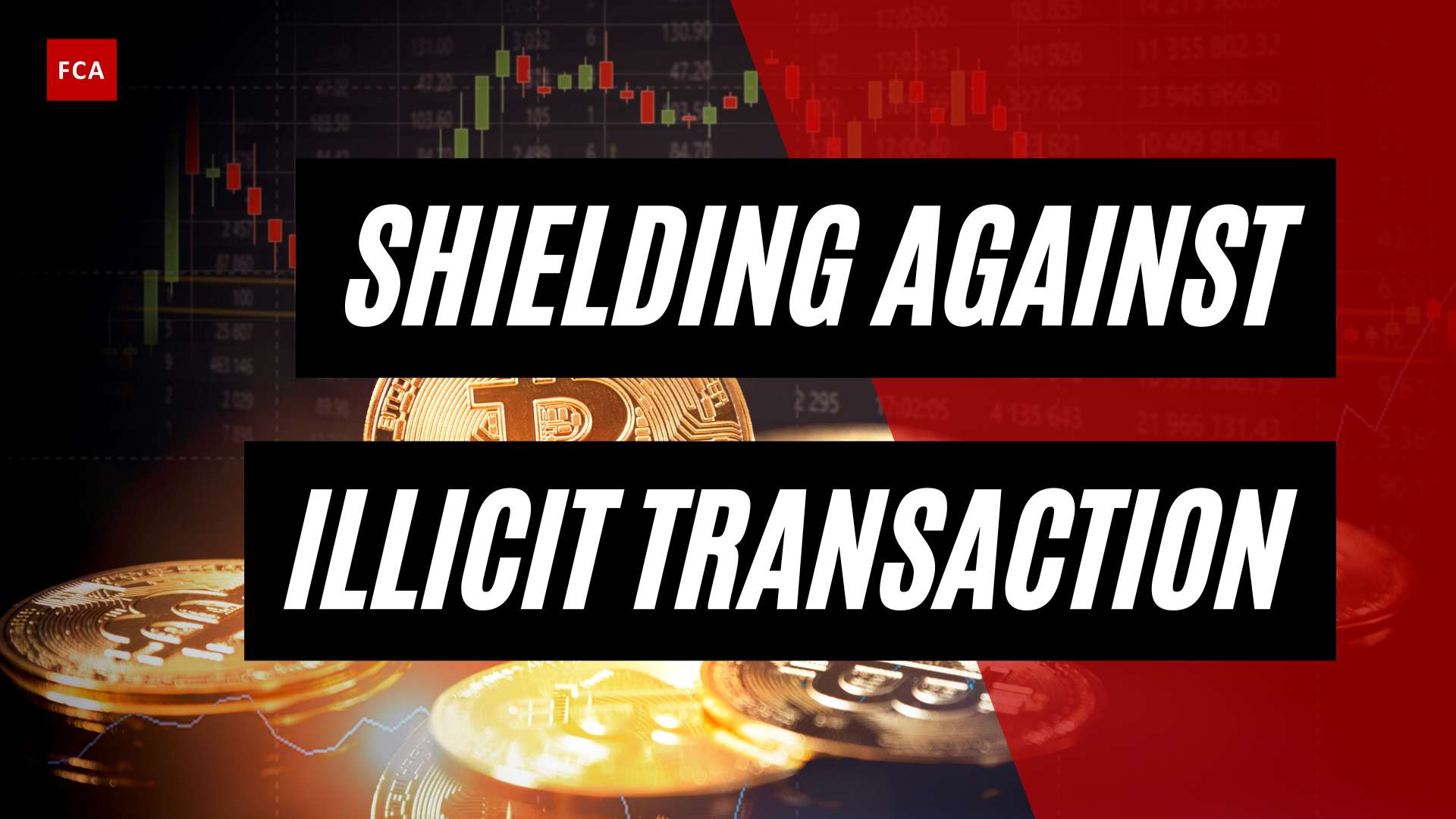Imagine a world where criminals can easily hide their ill-gotten gains and evade taxes by exploiting legal entities, all the while remaining undetected. This is the world of shell companies – a vital tool for money laundering through shell companies, tax evaders, and other financial criminals. By diving deep into the anatomy of shell companies, high-profile cases, regulatory efforts, and prevention measures, we can shed light on this dark corner of the global financial system and work together to dismantle these illicit networks.
Key Takeaways
Shell companies are often used to facilitate money laundering by obscuring the money trail and creating false invoices.
Regulatory efforts have been implemented to increase transparency, identify shell companies used for money laundering, and protect the integrity of global financial system.
Businesses must implement risk-based AML strategies such as beneficial ownership verification and transactional activity monitoring in order to detect & prevent misuse of shell companies & associated activities like money laundering.
The Anatomy of Shell Companies

Shell companies, or shell corporations, are legal entities that exist only on paper, with no significant assets, operations, or physical presence. While they can be used for legitimate purposes, such as holding assets or facilitating mergers and acquisitions, their ability to conceal ownership and transactions makes them attractive instruments for money laundering and tax evasion.
The British Virgin Islands and the Cayman Islands, recognized for their relaxed regulations and stringent privacy laws, are popular locations for forming shell companies. But, how do these seemingly harmless corporate entities turn into channels for financial crimes?
Legitimate Uses of Shell Companies
Despite the frequent linkage between shell companies and financial crimes, it’s imperative to acknowledge their lawful uses too. For instance, shell companies can be employed to hold assets such as real estate, stocks, bonds, and other investments, providing a layer of protection and anonymity to the true owners. Additionally, these entities can play a role in mergers and acquisitions by providing a legal structure to conduct the transaction, thereby streamlining the process and minimizing disruptions. However, it is important to remain vigilant against financial crimes shell companies, which can be used for illicit purposes.
Additionally, shell companies can serve to protect intellectual property rights by creating a legal entity to possess these rights. However, the very features that make shell companies useful for legitimate purposes also make them susceptible to abuse by money launderers and tax evaders.
How Shell Companies Facilitate Money Laundering
Money launderers exploit shell companies to hide the origin of illicit funds, create false invoices, and engage in complex transactions that obscure the money trail. Typically, a shell company is set up in a jurisdiction known for its strict privacy laws, providing a veil of secrecy that makes it difficult for investigators to trace the money trail back to the original criminal activity.
The shell company then engages in a series of transactions designed to “clean” the dirty money, often involving tactics such as issuing fake invoices for non-existent goods or services, or implementing round-tripping, where the same assets are exchanged multiple times to simulate legitimate business activity. As a result, the layers of obfuscation make it challenging for law enforcement agencies and financial institutions to detect and combat money laundering activities facilitated by shell companies.
High-Profile Cases Involving Shell Company Money Laundering

The risks and complexities associated with shell companies and money laundering are not just theoretical. High-profile cases, such as the Panama Papers, Danske Bank, and 1MDB scandal, have brought the issue of shell company abuse to light, demonstrating the global scale of financial crime.
In 2016, the Panama Papers leak was an extensive database containing over 214,000 offshore shell companies used to evade taxes, launder money and commit corruption. The data disclosed information of various individuals and businesses. The leaked documents revealed that shell companies had been formed in jurisdictions like the British Virgin Islands and the Cayman Islands, with many of them linked to influential political figures and their families.
The Danske Bank scandal, another high-profile case, involved a massive money laundering scheme using shell companies. The scandal revealed that the bank had been used to launder billions of euros from Russia and other former Soviet states.
Similarly, the 1MDB scandal involved the alleged misappropriation of billions of dollars from a Malaysian state investment fund. Investigations found that the money had been laundered through a complex network of shell companies, further emphasizing the need for regulatory action to combat shell company abuse.
Regulatory Efforts to Combat Shell Company Abuse

In response to the growing problem of shell company abuse, regulatory efforts, such as the Corporate Transparency Act in the United States and the Person with Significant Control in the United Kingdom, have been implemented to increase transparency and disclosure of beneficial ownership information. The Corporate Transparency Act aims to combat the obfuscation of information regarding shell companies by requiring companies to report their beneficial owners to the U.S. Department of the Treasury.
To add more context, the Corporate Transparency Act was enacted as part of the National Defense Authorization Act for Fiscal Year 2021. It requires corporations, limited liability companies, and similar entities to report certain information about their beneficial owners (the individuals who directly or indirectly own or control the company) at the time of the company’s formation. Companies are also required to update this information within a year of any changes. This information includes the beneficial owner’s full legal name, date of birth, current residential or business street address, and a unique identifying number from an acceptable identification document.
On the other hand, the Person with Significant Control (PSC) registry in the United Kingdom serves a similar purpose. Introduced in 2016, the PSC registry requires UK companies to disclose who owns or controls them. The PSC registry is publicly accessible and is part of the UK’s commitment to improving corporate transparency. By having these regulatory measures in place, it makes it more difficult for individuals to use companies as a means to launder money, evade taxes, or commit fraud.
Meanwhile, the Person with Significant Control registry in the United Kingdom serves to identify shell companies used for money laundering and prevent fraudsters from concealing their identity. These regulatory efforts demonstrate a commitment to tackle the issue of shell company abuse and money laundering.
By enhancing transparency and requiring the disclosure of beneficial ownership information, businesses and financial institutions can better assess the risks associated with their clients and partners, ultimately protecting the integrity of the global financial system. This is particularly important in the context of ownership and financial transactions, where understanding the parties involved is crucial for maintaining trust and security.
Risk-Based AML Strategies to Detect Shell Company Misuse

An effective way to counter shell company misuse and money laundering requires businesses and financial institutions to embrace risk-based AML strategies, concentrating on customer due diligence, red flags monitoring, and application of technology and AI solutions. By identifying and understanding the risks associated with shell companies, businesses can adjust their AML programs and compliance efforts to address these challenges. This proactive approach not only helps protect the integrity of the financial system but also enables businesses to adapt to the ever-evolving tactics employed by money launderers.
An all-inclusive risk-based AML strategy ought to comprise beneficial ownership verification, business relationships assessment, and transactional activity monitoring. By being vigilant and proactive in their AML efforts, businesses can play a crucial role in detecting and dismantling the illicit networks that rely on shell companies to launder money.
Customer Due Diligence and Beneficial Ownership Verification
A key component of a successful AML strategy is customer due diligence, which entails the verification of corporate entities’ beneficial ownership. By ensuring that they know who they are dealing with, businesses can better assess the risks associated with their clients and partners, ultimately helping to detect and prevent the misuse of shell companies for money laundering. Thorough customer due diligence goes beyond simply checking basic client information; it requires a deeper understanding of the client’s business structure, ownership, and the nature of their transactions.
Beneficial ownership verification is another essential aspect of customer due diligence, as it helps businesses:
Identify the ultimate beneficial owners of a company
Assess the risks associated with them
Uncover potential shell company involvement
Take appropriate action to mitigate the risk of money laundering
Protect the integrity of the financial system.

Monitoring and Identifying Red Flags
Beyond customer due diligence and beneficial ownership verification, businesses also need to track transactions and spot warning signs signaling potential shell company participation in money laundering. This involves a meticulous examination of transactional patterns, looking for irregularities or unusual activities that could suggest illicit dealings. It’s not just about looking at the numbers, but understanding the story they tell. Are there sudden, unexplained increases in business transactions? Are transactions consistently rounded up to large, whole numbers? Are there multiple transactions just below a reporting threshold? These could all be indicators of money laundering activities.Some warning signs to look out for include:
Unusual transaction patterns, such as frequent transfers of large amounts of money to and from the company
Inconsistent or incomplete documentation for transactions
Lack of a physical presence or legitimate business operations
Complex ownership structures or nominee directors
Involvement in high-risk jurisdictions or industries
These warning signs can indicate that the company may be a shell entity engaged in illicit activities. It is important for businesses to be vigilant and take appropriate measures to mitigate the risk of money laundering.

Monitoring for red flags should also include assessing the jurisdictions in which the company operates. High-risk jurisdictions known for lax regulations and strict privacy laws can be attractive to money launderers, making it essential for businesses to scrutinize the jurisdictions and assess the risks associated with their clients and partners.
Through vigilant transaction monitoring and red flag identification, businesses can pinpoint potential shell company involvement and initiate necessary actions to lessen the risk of money laundering.
Utilizing Technology and AI Solutions
Contemporary technology and AI solutions equip businesses with potent tools to boost their AML compliance initiatives and adjust to shifts in criminal strategies. Address verification and transaction monitoring technologies, powered by AI, can effectively examine potential concealed data such as addresses and corporation dates to accurately identify entities operating unlawfully.
These advanced technological tools can sift through vast amounts of data at a speed that is impossible for humans, identifying patterns and anomalies that might indicate suspicious activity. For instance, address verification can uncover whether a company’s registered address is a mailbox service or a residential property – a potential red flag for a shell company. The same technology can also cross-reference addresses against databases of known high-risk locations.
Transaction monitoring technologies, on the other hand, can track all financial activities of a company, highlighting any unusual or suspicious transactions that could signify money laundering. This can include transactions that are unusually large or frequent, or that involve entities in high-risk jurisdictions.
Moreover, AI-powered tools can learn and adapt over time. They can adjust to new money laundering tactics, continually improving their ability to detect and prevent financial crimes. This continuous learning and adaptation make AI a powerful ally in the fight against money laundering through shell companies.
By embracing these technologies, businesses can not only enhance their AML compliance but also contribute to the broader effort to combat financial crime and protect the integrity of the global financial system.
Advanced technologies, such as artificial intelligence and machine learning tools, can also be employed to facilitate data collection and analysis in order to detect potential misuse of shell companies and adapt to any changes in relevant regulations and criminal tactics. By leveraging technology and AI solutions, businesses can stay ahead of the curve in their efforts to combat shell company abuse and money laundering.
Global Hotspots and Jurisdictions Attractive to Money Launderers

Specific global locations and jurisdictions hold high appeal for money launderers. Their lax regulations, strong privacy laws, and low or non-existent corporate taxes make them a hub for this illegal activity. These jurisdictions, often referred to as tax havens, provide an ideal environment for the establishment and operation of shell companies, enabling money launderers to exploit the secrecy and anonymity they offer.
Shell companies are typically established in several jurisdictions. They include the British Virgin Islands, the Cayman Islands, Panama and others. By being aware of these global hotspots and the risks associated with them, businesses and financial institutions can better assess the risks posed by their clients and partners, ultimately contributing to the fight against shell company abuse and money laundering.
Prevention Measures for Financial Institutions

Financial institutions hold a key position in the fight against shell company misuse and money laundering. By implementing prevention measures such as risk-based AML programs, thorough client information collection, and scrutiny of beneficial ownership, financial institutions can mitigate the risk of shell company money laundering and protect the integrity of the global financial system.
In addition to these prevention measures, financial institutions must also ensure that they adhere to AML regulations and guidelines set forth by domestic legislation and international bodies such as the Financial Action Task Force (FATF). Failure to comply with these regulations can result in significant penalties and irreversible damage to the institution’s reputation.
By recognizing the risks associated with shell companies and taking appropriate action to address them, financial institutions can play a vital role in dismantling the illicit networks that rely on these entities to launder money.
Summary and Conclusion

Discerning the role of shell companies in money laundering holds critical importance for businesses, regulators, and global law enforcement agencies. By being vigilant and proactive in their AML efforts, businesses can play a crucial role in detecting and dismantling the illicit networks that rely on shell companies to conceal and launder dirty money.
As we continue to shed light on this dark corner of the global financial system, it is our collective responsibility to combat shell company abuse and financial crime, ensuring the integrity and trustworthiness of the financial system for all.
Frequently Asked Questions
In this section, we aim to tackle some frequently asked questions concerning shell companies and money laundering. These FAQs will provide you with a better understanding of the topic and help clarify any uncertainties you may have.
How is use of shell companies part of this phase of money laundering?
Shell companies are often used in the layering phase of shell companies money laundering, where the goal is to obscure the origin of illicit funds and make it difficult for authorities to trace the money back to the original criminal activity. By engaging in complex financial transactions and issuing fake invoices, shell companies can create a tangled web of transactions that make it challenging for investigators to follow the money trail and uncover the true source of the funds.
What are the red flags for shell companies?
Red flags for shell companies may include:
Unusual transaction patterns, such as frequent transfers of large amounts of money to and from the company
A lack of physical presence or significant assets
Connections to high-risk jurisdictions known for lax regulations and strict privacy laws.
By monitoring for these red flags, businesses and financial institutions can identify potential shell company involvement and take appropriate action to mitigate the risk of money laundering.
How can a shell company be identified and looked into?
To identify and investigate a shell company, businesses should:
Verify its beneficial ownership
Conduct thorough customer due diligence
Obtain the company’s registration documents and other records
Scrutinize the company’s business structure, ownership, and the nature of its transactions.
By being vigilant in their due diligence efforts, businesses can uncover potential shell company involvement and take appropriate action to address the risk of money laundering.
What is the most famous money laundering scheme?

One of the most famous money laundering schemes is the Panama Papers scandal, which exposed an extensive database of over 214,000 offshore shell companies used for tax evasion, money laundering, and corruption. The leaked documents revealed that these shell companies were established in jurisdictions like the British Virgin Islands and the Cayman Islands, with many of them linked to influential political figures and their families.
The scandal brought the issue of shell company abuse to light, highlighting the need for regulatory action to combat this global problem.









